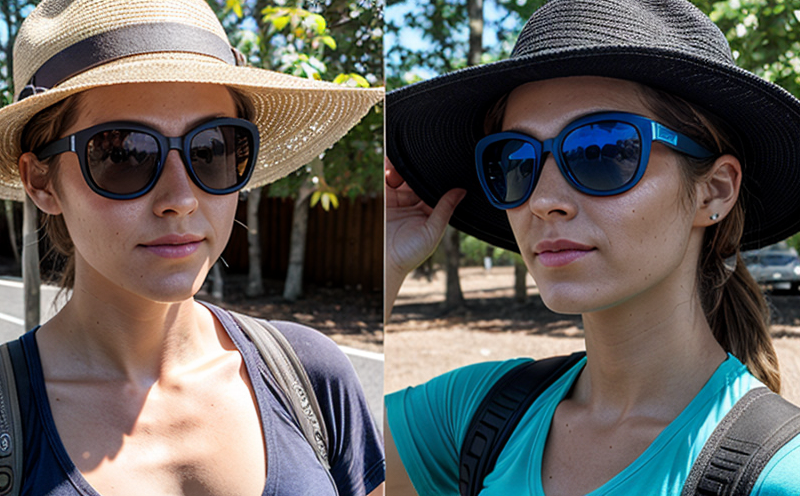AATCC 190 Testing of UV protective finishes on textiles
The AATCC Test Method 190 is a widely accepted international standard used to evaluate the ultraviolet (UV) protection properties of textile materials. This test assesses the ability of a fabric finish or coating to block harmful UV radiation, which can penetrate through the material and cause degradation of color fastness, as well as potential health risks for users who wear or use textiles with insufficient UV protection.
Textiles with inadequate UV protection are particularly vulnerable in outdoor applications such as sunshades, awnings, umbrellas, and clothing. AATCC 190 provides a standardized approach to ensure that textiles meet the required standards for UV protection, thus offering consumers peace of mind regarding their product's performance.
The testing method involves exposing the specimen under controlled conditions to artificial light sources that simulate solar radiation, then measuring the reduction in UV transmission through the material. The results are reported as a percentage of UV blocking efficiency. This allows manufacturers and quality managers to compare different products and ensure compliance with regulatory standards or internal specifications.
The process typically includes several steps: selecting appropriate test specimens based on their intended use, applying the specified treatment according to AATCC 190 guidelines, exposing the treated samples to UV light for a set duration, measuring pre- and post-treatment transmission levels using spectrophotometric instrumentation, and analyzing the data to determine UV protection efficiency.
Understanding the nuances of this test is crucial for quality managers and compliance officers who must ensure that their products meet global standards. By adhering to these stringent requirements, companies can enhance brand reputation and customer satisfaction while avoiding potential legal issues related to non-compliance with health and safety regulations.
| Standard Code | Description |
|---|---|
| AATCC 190-2023 | Test Method for Determining Ultraviolet Protection Factor (UPF) of Textiles |
| ISO 17651:2018 | Ultraviolet protection factor (UPF) - Part 1: Determination and labeling of the UPF of textile materials |
In summary, AATCC 190 Testing is essential for manufacturers seeking to produce textiles with effective UV protection. It provides a reliable method for assessing the performance of fabric finishes in blocking harmful UV rays. By following this standardized procedure, companies can ensure their products meet international quality and safety standards.
Applied Standards
| Standard Code | Description |
|---|---|
| AATCC 190-2023 | Test Method for Determining Ultraviolet Protection Factor (UPF) of Textiles |
| ISO 17651:2018 | Ultraviolet protection factor (UPF) - Part 1: Determination and labeling of the UPF of textile materials |
The AATCC Test Method 190 is a crucial part of the international standards for evaluating UV protection in textiles. This test method ensures that the fabrics undergo rigorous scrutiny to determine how well they block harmful UV radiation, which can lead to color fading and potential health issues if not controlled properly.
Compliance with these standards is vital because it guarantees that the products meet specific requirements set by regulatory bodies worldwide. For instance, ISO 17651 provides detailed procedures on how to measure and label UPF values on textile materials, ensuring transparency for consumers about the level of UV protection they can expect from a product.
By adhering strictly to these standards during production processes, manufacturers not only enhance their products' durability but also protect end users by providing safer alternatives. This approach fosters trust and loyalty among customers who appreciate high-quality, responsibly produced goods.
Eurolab Advantages
- Comprehensive expertise in textile testing
- Dedicated team of qualified professionals
- State-of-the-art laboratory facilities
- Accurate and reliable results
- Prompt turnaround times
- Robust quality management systems
Eurolab prides itself on being a leader in textile testing services, particularly when it comes to AATCC 190 compliance. Our comprehensive expertise allows us to offer clients unparalleled support throughout the entire process of UV protection evaluation. With our dedicated team of highly qualified professionals and cutting-edge laboratory equipment, we ensure that every test is conducted accurately and efficiently.
Our strict adherence to international standards guarantees reliable results that can be trusted by both manufacturers and consumers alike. Faster turnaround times mean less disruption for your business while maintaining the highest level of service quality. Additionally, our robust quality management systems provide peace of mind knowing that we are committed to delivering consistent excellence in every aspect of our work.
Competitive Advantage and Market Impact
- Ensures compliance with global standards
- Enhances brand reputation through quality assurance
- Promotes safer products for consumers
- Facilitates market entry into regulated regions
- Sustains competitive edge by meeting regulatory requirements
The ability to perform accurate and reliable AATCC 190 testing offers significant competitive advantages in the global textile industry. By ensuring compliance with international standards, companies can enhance their brand reputation through quality assurance practices that demonstrate a commitment to producing safe and effective products.
Consumers are increasingly aware of the importance of UV protection when selecting textiles for outdoor use or prolonged exposure scenarios. Brands that prioritize these safety measures will likely see increased customer loyalty and satisfaction as they meet consumer expectations regarding product performance and health implications.
In addition to enhancing brand image, meeting regulatory requirements also facilitates market entry into regions with strict compliance regulations. This allows businesses to expand their reach without compromising on standards set by local authorities or international bodies like the European Union (EU). Maintaining a competitive edge in today’s fast-paced market requires continuous adherence to evolving standards and best practices.





